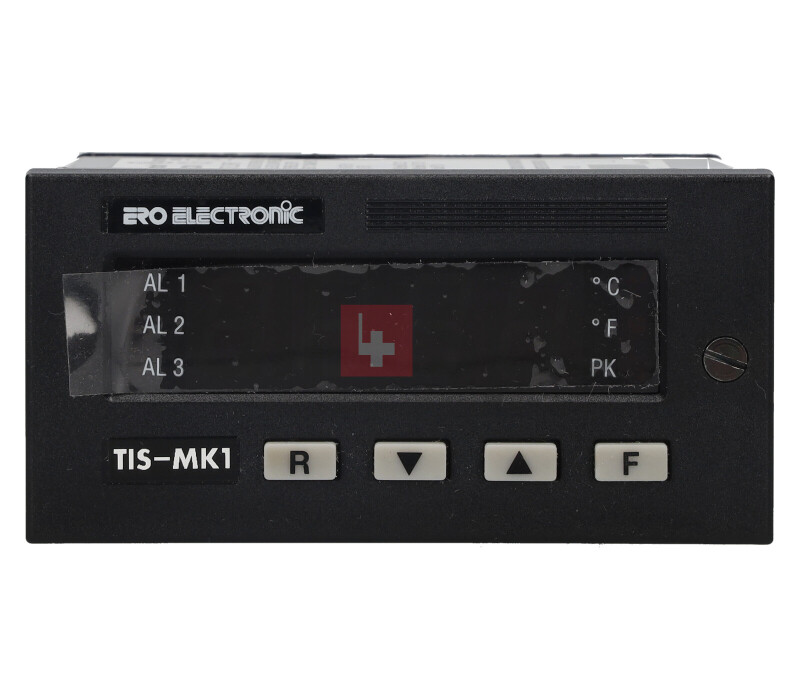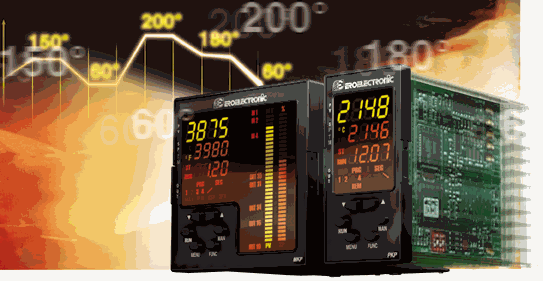If you’re researching Ero Electronic, chances are you’ve encountered its name on industrial control systems, circuit boards, or automation modules. While the brand doesn’t command headlines like Silicon Valley giants, Ero Electronic has quietly shaped the infrastructure behind European automation, engineering, and industrial control for over half a century.From its modest beginnings in postwar Europe to its current role in sophisticated machinery and embedded electronics, Ero Electronic represents a fusion of old-world engineering rigor with modern digital precision.
In this article, we explore its origin, historical arc, core innovations, and continued relevance in today’s evolving tech ecosystem.
The Birth of Ero Electronic: 1960s West Germany
The roots of Ero Electronic stretch back to the industrial rebuilding period of West Germany in the 1960s. Born under the name Elektronik Rödelheim, the company was established to serve a growing demand for modular electronic solutions in manufacturing and automation sectors undergoing massive transformation thanks to electromechanical control systems.In a decade defined by automation, analog-to-digital transitions, and growing machine intelligence, Ero began by building reliable relay-based modules that could withstand heavy-duty cycles in German factories. The brand became synonymous with rugged design, high compatibility, and technical clarity qualities prized by engineers.
By the 1970s, Ero Electronic had evolved into a respected niche supplier, frequently integrated into OEM machinery across German-speaking countries.
Growth and Expansion: From Relays to Integrated Control
As industries matured into the 1980s, Ero expanded from simple relay modules into multi-functional control units. These devices were designed to:
- Coordinate motors and actuators
- Manage safety interlocks
- Power time-dependent processes (like conveyor stops)
- Translate analog signals to logic commands
This shift mirrored the global move toward mechatronics a synergy between electronics and mechanical systems. Ero’s contribution? Making it easy for manufacturers to retrofit existing machines with intelligent modules, long before IoT was even a concept.At a time when many companies were locked into proprietary platforms, Ero offered modular, open-ended designs that empowered engineers to scale systems over time.
Table: Ero Electronic – At a Glance
| Category | Details |
| Company Name | Ero Electronic GmbH (originally Elektronik Rödelheim) |
| Founded | Early 1960s |
| Country of Origin | Germany |
| Primary Focus | Industrial automation, electronic modules, control systems |
| Key Products | Relay modules, time switches, interface technology, power supplies |
| Industries Served | Machinery, HVAC, railways, automation, packaging, robotics |
| Global Reach | Primarily Europe, with partners in Asia and North America |
| Known For | Durability, German engineering quality, adaptability to legacy systems |
Innovation in Product Design: Ero’s Modular Philosophy
Ero Electronic’s success can largely be traced to its philosophy of modularity. Rather than forcing a full-system overhaul, their products were:
- DIN-rail compatible
- Stackable and swappable
- Designed for signal isolation and durability
- Able to integrate with legacy and modern PLCs alike
This design mindset enabled interoperability, a critical advantage in industrial environments that depend on long lifecycle machines. It also allowed Ero to bridge generational gaps in technology from analog timers to microprocessor-controlled units.One of their flagship innovations was the multi-range timer module, which gave engineers the ability to dial-in precision timing across voltages and cycles with zero software.
Key Products and Their Impact
While Ero’s product catalog spans hundreds of items, several hallmark technologies stand out:
1. Relay Interface Modules
- Used to bridge signals between sensors and PLCs.
- Available in multi-channel options.
- Known for long contact life and high current tolerance.
2. Time Control Devices
- Range from simple analog dial timers to programmable delay circuits.
- Crucial in HVAC, manufacturing lines, and light-based automation.
3. Power Supply Units
- Compact and reliable with overvoltage protection.
- Integral for 24V DC logic environments.
4. Signal Conditioning Modules
- Translate raw analog signals into readable digital formats.
- Support temperature sensors, pressure switches, and optical inputs.
In many industrial sectors, these tools are invisible backbones working silently but indispensably.
Industries and Use Cases
Ero Electronic’s products serve a wide variety of sectors, each with unique reliability demands:
Industrial Machinery
- Automated presses, CNC machines, and stamping tools depend on Ero’s timing and safety relays.
Railways and Transportation
- Ero modules are used in signal logic, brake control, and door operation sequencing.
HVAC Systems
- Delay-on-start modules and contactors regulate fan cycles, thermal thresholds, and humidity triggers.
Energy and Utilities
- In substations, Ero’s isolators are part of remote switchgear logic systems.
Their adaptability allows them to support both new installations and aging systems a major reason why engineers continue to prefer Ero in brownfield projects.
From Analog to Digital: The Evolution of Ero Electronic
The late 1990s and early 2000s marked a seismic shift toward digital control systems. PLCs (programmable logic controllers) became widespread, and systems required higher-level communication protocols like:
- Modbus
- CANopen
- PROFIBUS
- Ethernet/IP
Rather than being left behind, Ero responded by:
- Integrating microcontrollers into their relay logic
- Developing software-configurable timers and sequencers
- Supporting plug-and-play diagnostics through LED fault displays
- Enhancing EMI shielding and CE certification for global use
This evolution preserved the Ero ethos simple, robust design while aligning with Industry 4.0 standards.
Ero Electronic Today: Quietly Critical in the Digital Backbone
Today, Ero Electronic operates as a trusted component supplier across Europe. Their products may not be glamorous, but they are embedded in the very pulse of modern infrastructure.
With industry partners in:
- Switzerland (precision tools)
- Italy (food packaging lines)
- France (aerospace tooling)
- Turkey and Poland (transport infrastructure)
Ero’s modules power hundreds of thousands of systems, often for decades without failure.
Unlike high-profile brands that rebrand annually, Ero thrives on legacy compatibility, long-term availability, and tech support that speaks the language of engineers.
Why Engineers and Integrators Choose Ero
| Reason | Explanation |
| Longevity | Products last 15–20+ years in field conditions |
| Compatibility | Works with new and legacy equipment |
| Transparent Schematics | Clear datasheets and diagrams support rapid integration |
| Supportive Documentation | Guides written for engineers, not just marketers |
| Supply Chain Stability | German production standards and reliable delivery |
| Cost Efficiency | Modular components reduce need for full system replacements |
Pros and Cons of Ero Electronic Components
| Pros | Cons |
| Extremely reliable and field-tested designs | Less emphasis on sleek aesthetics or consumer appeal |
| Modular architecture supports phased upgrades | Limited visibility outside of Europe |
| Compatible with both legacy and PLC systems | Some product lines may be considered “basic” compared to newer IoT startups |
| High tolerance to temperature, vibration, and electrical noise | Limited wireless or cloud-native functionality |

The Evolution Timeline: From Rödelheim Roots to Modern Automation
| Year | Milestone |
|---|---|
| 1962 | Founded in Rödelheim, Germany to supply analog relays and timers |
| 1975 | Expands into multi-channel interfaces for German machinery |
| 1985 | Adds digital delay units and power conditioning modules |
| 1999 | Begins integrating programmable controllers and signal conversion tech |
| 2010 | Introduces CE-certified, EMC-hardened components for EU compliance |
| 2020 | Products now support Modbus and PROFIBUS interfaces for smart industry |
Conclusion
In a world obsessed with sleek apps, digital dashboards, and connected everything, it’s easy to forget that the backbone of progress still runs on dependable components. Ero Electronic isn’t trying to disrupt anything it’s trying to keep the machines that move us running quietly, efficiently, and for the long haul.Ero Electronic stands as a reminder that legacy doesn’t mean obsolete, and that modular design, clear engineering, and rock-solid reliability still have a place in an age of rapid disruption.
Whether it’s powering a railway signal in Prague or a packaging line in Milan, Ero lives in the circuits behind the scenes trusted by those who know that when things must work, simplicity is the ultimate sophistication.
FAQs
1. Is Ero Electronic still manufacturing in Germany?
Yes, most core manufacturing still occurs in Germany under strict quality control. Some assembly is subcontracted within the EU.
2. Can I use Ero products with modern PLCs like Siemens or Allen-Bradley?
Absolutely. Their interface modules are designed for interoperability and voltage translation across platforms.
3. Are Ero devices suitable for outdoor or harsh environments?
Many are. Always check IP ratings some products are shock- and moisture-resistant for outdoor panels.
4. How do I source replacement parts for legacy Ero timers?
The company maintains an archive inventory and often offers form-fit-function replacements.
5. Does Ero make IoT-enabled devices?
Not directly. Their focus is on robust foundational control. However, products can be integrated with IoT controllers.
6. Is Ero open to OEM customization?
Yes, especially for long-term industrial partners. Custom labeling and voltage specs can be accommodated.

